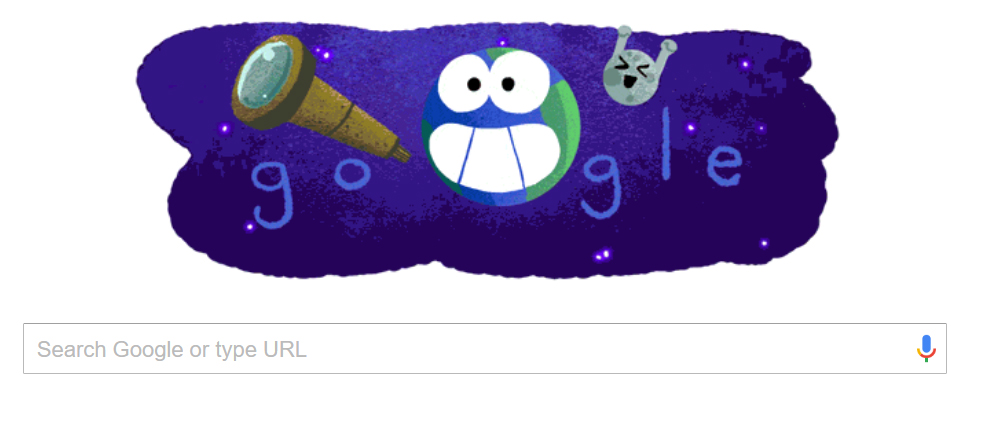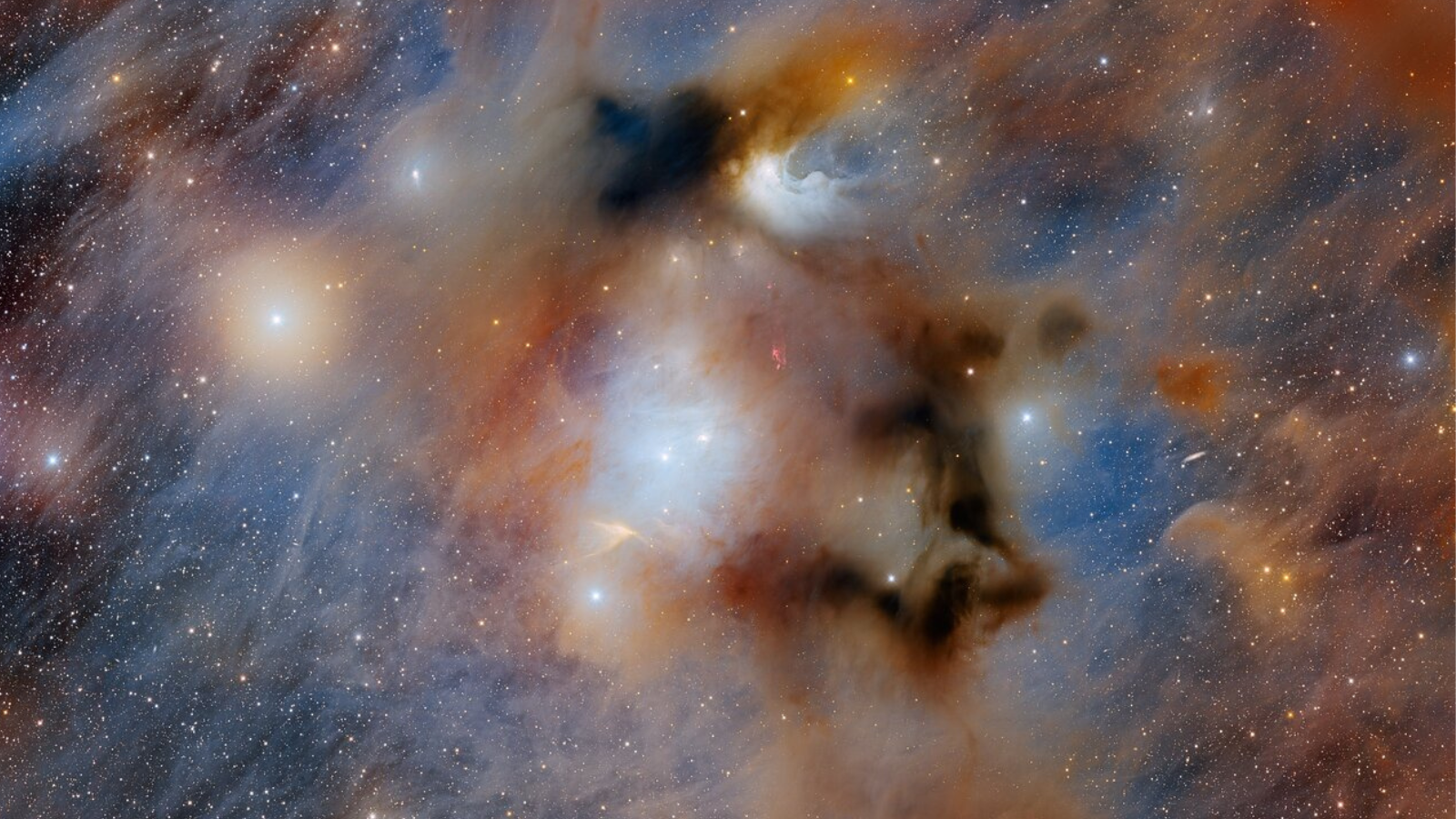Exoplanet Discovery at TRAPPIST-1 Celebrated in Google Doodle

Scientists aren't the only ones excited about the discovery of seven Earth-size exoplanets around the star TRAPPIST-1. It turns out, the folks at Google are fans, too, and they celebrated with an adorable Google Doodle.
The doodle shows an animation of Earth and the moon peering through a telescope only to find seven exoplanets waving right back. The moon, as you see here, is positively thrilled. The animated doodle is the creation of artist Nate Swinehart, according to a Google description.
"This just in! Turns out it wasn't just dust on the telescope lens: NASA just announced the discovery of seven earth-size planets orbiting the same star only 235 trillion miles away," Google representatives wrote on the company's Google Doodle blog. "In space terms, that practically makes us next-door neighbors!"
The exoplanets of the TRAPPIST-1 system are 39 light-years away from Earth. Their discovery was announced Wednesday (Feb. 22) in a NASA press conference and the research is detailed in this week's edition of the journal Nature.
Not only are there at least seven Earth-size planets in the TRAPPIST-1 system, three of those worlds are in what scientists call the "habitable zone" - a region around their star where the conditions are just right for liquid water to exist on a planetary surface. On Earth, liquid water is essential to life, so finding similar conditions for liquid water on other worlds is a major plus in the search for life on other potentially habitable worlds, NASA scientists have said.
In case you're wondering, the TRAPPIST-1 planets do not have their own unique names yet (and likely won't for awhile). For now, they're called TRAPPIST-1b, TRAPPIST-1c, TRAPPIST-1d, TRAPPIST-1e, TRAPPIST-1f, TRAPPIST-1g and TRAPPIST-1h.
Get the Space.com Newsletter
Breaking space news, the latest updates on rocket launches, skywatching events and more!
Email Tariq Malik at tmalik@space.com or follow him @tariqjmalik and Follow us @Spacedotcom, Facebook and Google+. Original article on Space.com.
Join our Space Forums to keep talking space on the latest missions, night sky and more! And if you have a news tip, correction or comment, let us know at: community@space.com.

Tariq is the Editor-in-Chief of Space.com and joined the team in 2001, first as an intern and staff writer, and later as an editor. He covers human spaceflight, exploration and space science, as well as skywatching and entertainment. He became Space.com's Managing Editor in 2009 and Editor-in-Chief in 2019. Before joining Space.com, Tariq was a staff reporter for The Los Angeles Times covering education and city beats in La Habra, Fullerton and Huntington Beach. In October 2022, Tariq received the Harry Kolcum Award for excellence in space reporting from the National Space Club Florida Committee. He is also an Eagle Scout (yes, he has the Space Exploration merit badge) and went to Space Camp four times as a kid and a fifth time as an adult. He has journalism degrees from the University of Southern California and New York University. You can find Tariq at Space.com and as the co-host to the This Week In Space podcast with space historian Rod Pyle on the TWiT network. To see his latest project, you can follow Tariq on Twitter @tariqjmalik.
